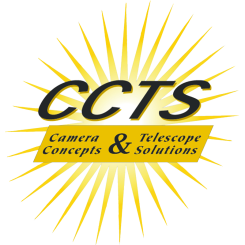Tele Vue Plossl 10.4mm (Pre-owned) JAPAN
| Availability: | In stock |
| Delivery time: | Hurry! Buy Now before it is GONE! |
The Tele Vue Plossl 10.4mm eyepiece is a classic and well-regarded choice among amateur astronomers for its excellent optical performance and versatility. Here are some key features and considerations about the Tele Vue Plossl 10.4mm eyepiece:
-
Optical Design: Plossl eyepieces are known for their simple but effective optical design, typically consisting of four lens elements in two groups. This design provides good image quality with minimal aberrations, making them suitable for a wide range of astronomical observations.
-
Apparent Field of View (AFOV): The Tele Vue Plossl 10.4mm eyepiece typically offers an apparent field of view of around 50 degrees. While not as wide as some other eyepiece designs like wide-angle or ultra-wide-angle types, Plossl eyepieces provide good contrast and are well-suited for planetary and lunar observations.
-
Eye Relief: Plossl eyepieces generally offer moderate eye relief, which is sufficient for most observers, including those who wear eyeglasses. The exact eye relief for the Tele Vue Plossl 10.4mm may vary slightly, so it's always good to check specific product details.
-
Build Quality: Tele Vue is renowned for its high build quality and precision engineering. The Plossl series is no exception, featuring robust construction and quality materials that ensure durability and reliability.
-
Versatility: With a 10.4mm focal length, this eyepiece provides moderate magnification, making it suitable for observing a variety of celestial objects, including planets, lunar details, and some deep-sky objects like star clusters and smaller nebulae.
-
Compatibility: The Tele Vue Plossl 10.4mm eyepiece typically comes in a 1.25-inch barrel diameter, which is the standard size for most telescopes. It's important to ensure compatibility with your telescope's focuser size before purchasing.
-
Usage: This eyepiece is particularly valued for its sharpness and clarity, especially when observing planets like Jupiter and Saturn, where high magnification and good contrast are important for resolving details such as cloud bands and planetary features.












